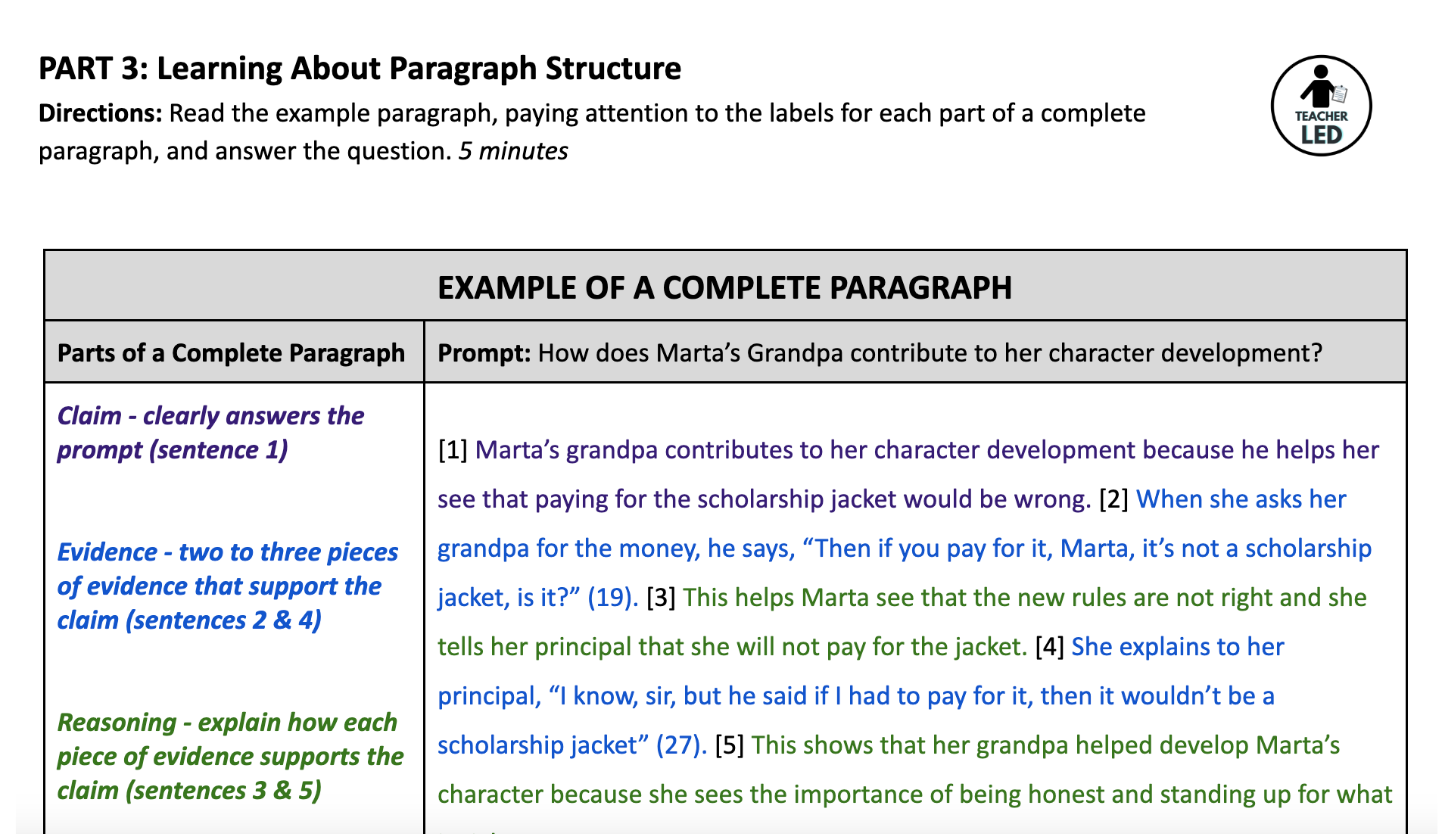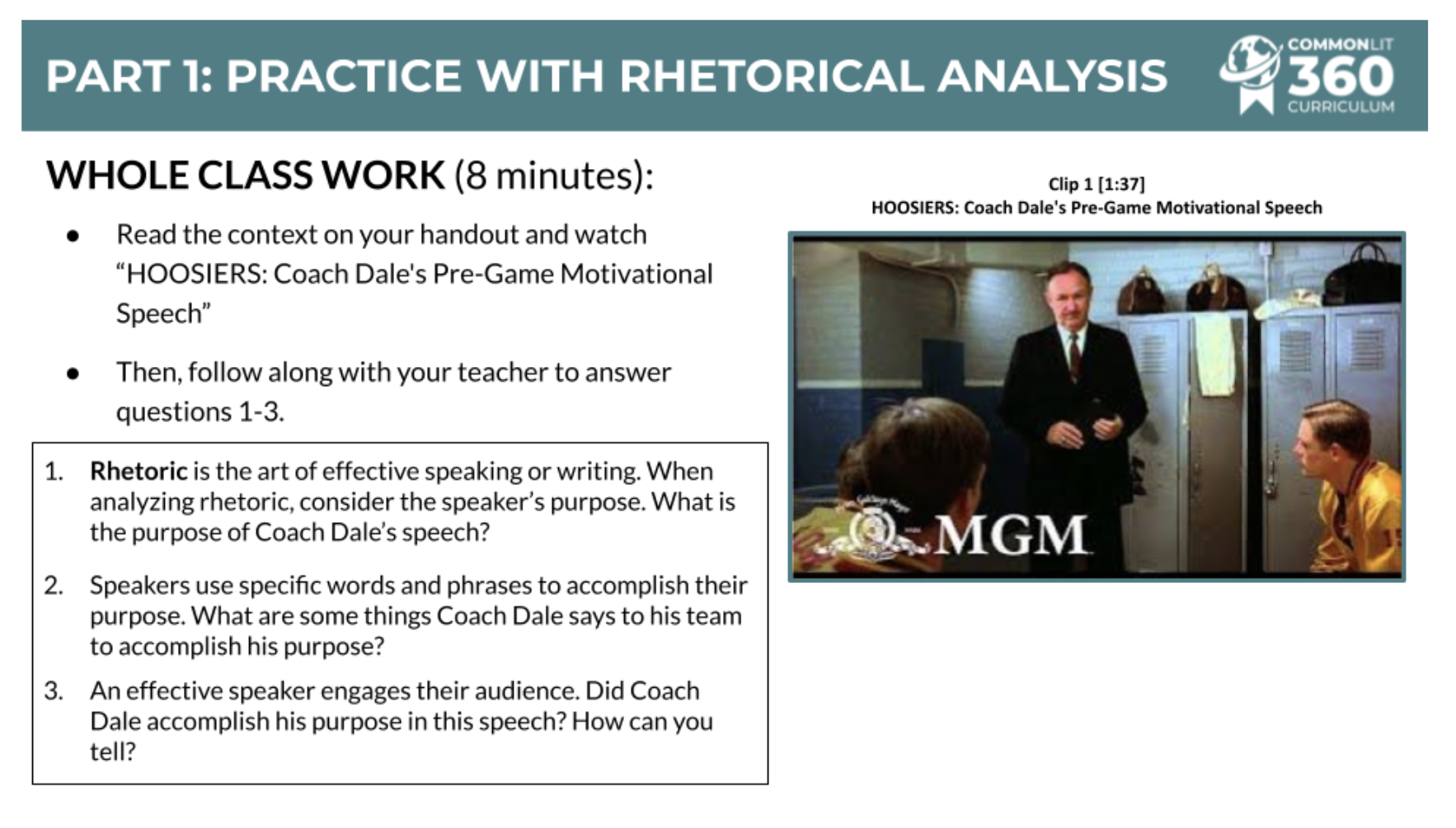Explore the curricular features that provide additional tools to bolster learning
While CommonLit 360 was created to support all students and their learning needs, the full-year digital ELA curriculum from CommonLit is designed in ways that are particularly supportive for students with disabilities. This group of students makes up 15% of the population of K-12th graders, and that number has grown over the past decade. Along with that growth, the need for teaching and learning tools geared towards helping them has grown, too.
Here’s a list of lessons, resources, and technology tools found within each CommonLit 360 unit that provides tangible scaffolding and reinforcement opportunities for students with disabilities.
Reading Lessons
The foundation for each CommonLit 360 unit is the wide array of engaging and rigorous reading lessons that all align to the unit’s Essential Question. In CommonLit 360 reading lessons, students engage in one or more readings of a text. Carefully sequenced writing, discussion and assessment questions guide students through their comprehension and analysis of the unit texts.
These reading lessons support students with disabilities in a number of ways including:
Pre-Reading to Build Students’ Knowledge
Editable introductory slide decks start each reading lesson with a hook and preview of what’s to come. These decks also provide beneficial background knowledge and set the skill focus for the lesson. If students need additional background knowledge or a skill review, teachers can add their own content to the slide deck.
For example, the introductory deck from the 7th Grade Unit 1 reading lesson “Where I’m From,” a short story about a girl and her Japanese heritage, features essential background information on Pearl Harbor and the subsequent treatment of Japanese-Americans in the U.S.
A Scaffolded During-Reading Experience
Each CommonLit 360 reading lesson includes comprehension questions that are carefully crafted to help students build understanding of the text.
These questions are helpful for students because they focus on key plot points. These questions also help students build key skills that connect to the focus standard of the lesson.
In 360 reading lessons, you’ll also notice that CommonLit makes recommendations for “Whole Class Reading,” “Partner Reading,” and “Independent Reading.”
Generally, lessons begin with “Whole Class Reading.” This tends to be the most supportive for students. Teachers can build engagement for students by reading the text clearly and fluently.
As lessons progress, lessons typically gradually release students to do more partner or independent reading. However, as the teacher, you can increase support for students by reading larger chunks of the text aloud. This could be a strategy to pursue if your students really struggle to decode grade-level texts.
Teachers can also encourage struggling readers to use CommonLit’s text-to-speech technology. This feature is particularly powerful for students who struggle to decode and/or fluently read grade-level texts.
Writing Lessons
The Writing Lessons found in CommonLit 360 can help students with disabilities become more effective and confident writers, and each unit includes:
Exemplars to assist students with analyzing and understanding the components of evidence-based writing.
For example, in the 6th Grade Unit 1 writing lesson on writing a complete paragraph, students are given an example to use as a foundation for their own writing. Complete with color coding, the example below helps students see how to include a claim, evidence, and reasoning in their own paragraph.

Graphic organizers aid students in developing their writing and help students to focus on pulling together pieces of information for later use.
An example of this is the graphic organizer in the 6th Grade Unit 1 lesson on Planning the Culminating Task: Literary Analysis Essay. Students develop their thesis around the theme of a unit text, and then gather the evidence they’ll need for their essays. When students are ready to draft their essays in the next lesson, they’ll be set up for success.
Vocabulary Instruction
Vocabulary acquisition is a pivotal part of reading and the number one predictor of comprehension. To aid with vocabulary skill building, each CommonLit 360 unit provides explicit Tier 2 vocabulary instruction that aligns to the texts from the unit. The words on each unit’s vocabulary list are selected from the readings, and each list of vocabulary terms comes with multiple activities for students to complete and practice with as well as a variety of application opportunities.
We recommend completing the first vocabulary activity together as a class. This will help ensure that students are fully grasping what each new vocabulary word means. Subsequent vocabulary activities can be completed as a class or individually.
Related Media Explorations
Within each CommonLit 360 unit are high-interest resources called Related Media Explorations that are designed to build students’ background knowledge and bring a multimodal element to learning. These lessons are placed in the most impactful points of the units, and they help students better analyze and understand unit texts. With audio clips, graphics, and video components and not just written materials, these resources give students with disabilities a different way to build knowledge and understanding.
Some Related Media Explorations develop students’ understanding of academic concepts. For example, in the 7th Grade Unit 5 Related Media Exploration, students view clips from a variety of films to investigate and internalize ethos, pathos, and logos as rhetorical devices.

Other Related Media Explorations provide helpful background knowledge for the unit. In 11th Grade Unit 1, there is an engaging and informative exploration of a variety of events that led to the “Roaring Twenties.” This knowledge is vital to understanding the setting of the novel The Great Gatsby.
Discussion Lessons
Giving students the opportunity to verbalize their thoughts and thinking regarding a text is an integral part of the learning process. The Discussion Lessons in each CommonLit 360 unit provide deliberate instruction for speaking and listening skills as well as a range of sentence stems to help students who need prompts to best articulate their thoughts about a text.
These pivotal text-based classroom conversations help foster speaking and listening skills and work to let students develop their ideas before writing about those ideas in their Culminating Task. Discussing what’s being read helps students internalize the information and prepare for subsequent writing assignments.
For example, in the 7th Grade Unit 5 Discussion Lesson, students are prompted to record their evidence prior to the classroom discussion taking place. The compiling of evidence helps them be ready to engage with classmates and provides evidence for the Culminating Task later on.
An additional tool that is beneficial to students with disabilities is the sentence stems that provide helpful support as students work to frame their thinking for classroom discussions. An example from the 7th Grade Unit 5 discussion lesson is below.
CommonLit 360: A supportive and beneficial curriculum
Providing additional and tangible support for students with disabilities is critical for their success and achievement in the classroom. CommonLit 360 is a research-based and cohesive literacy curriculum that provides this support in an inclusive and engaging way.


